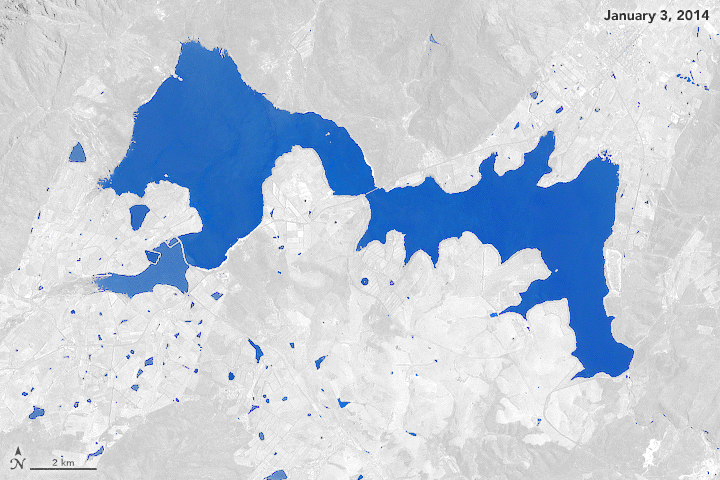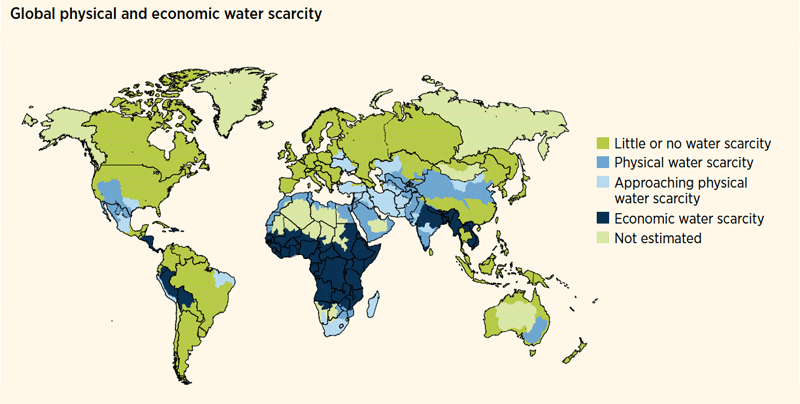
In mid-January, Cape Town officials announced that the world-class South African city of four million residents would run out of water on April 12. The date, nicknamed “Day Zero,” has since been postponed multiple times, thanks to the intense conservation efforts by locals, a sharp reduction in agricultural water usage, and a 10 billion-liter donation from the private reservoirs of the Groenland Farmers Association. The city now has enough water to sustain the current level of usage until July 9, giving residents hope that the rainy season, which begins in June, will be more regular than has been the case lately.
Four years ago, Cape Town’s water woes would have seemed improbable given that the city’s six dams, which can hold 230 billion liters of water, were filled to the brim. However, three years of low rainfall — a third of normal levels — and the ever-increasing population, have reduced the overflowing dams to puddles.

In an attempt to avoid Day Zero, when water levels will plummet to 13.5 percent capacity, the government has imposed a strict 50-liter daily limit for all households. Residents are being urged to reduce their water usage by making small changes like taking shorter showers, washing hands with sanitizers, and reusing bathing water to flush toilets. Those that use more have to pay hefty fines.
Should Day Zero strike, a million homes, or about 75 percent of the city, will lose access to running water. Residents will instead have to wait in line at the over 200 water distribution centers established around the city to obtain their reduced quota of 25 liters a day. “As things stand, the challenge exceeds anything a major city has had to face anywhere in the world since the Second World War or 9/11,” said Western Cape Premier Helen Zille.

With severe water rationing looming, residents are striving to be as resourceful as possible. More are storing water or filling up at spring water taps established by local breweries. Those who can afford it are digging wells in their backyards, while a waterfront hotel is investing in a desalination plant to obtain its water supply from the ocean. Engineers have also been at work installing new pump equipment in some of the reservoirs to extract the last 10 percent of water, which is notoriously hard to access.
Though these conservation measures will help in the short run, only nature can eliminate the dire situation. If the city gets a reasonable amount of precipitation during its winter season from June to August, it will provide much-needed relief. However, the local officials are not sure it will happen. “We had hope that rainfall would replenish the dams, but it hasn’t happened. What this signaled to me is that climate change is reality. If you doubted it before, you can’t now,” said Greg Pillay, head of Cape Town’s disaster operations center.

Unfortunately, Cape Town is not the only city facing dwindling water sources. In 2015, São Paulo, Brazil was 20 days shy of cutting off water from its 12 million residents, leading to looting and unrest. Areas in India, Indonesia, and Mexico are facing severe shortages, while Australia and California are both combating droughts. In Venice, the legendary canals that traverse the city recently dried out to mere streams thanks to a cold winter, a lack of rain, and low tides caused by February’s super blue blood moon.
The World Wildlife Fund estimates that two-thirds of the globe could be facing water shortages similar to Cape Town’s by 2025 due to climate change-induced droughts and growing urban populations. It is, therefore, crucial for all of us to help avert Day Zero in our town or city with small lifestyle changes like planting drought-resistant shrubs, taking shorter showers, turning off taps when brushing teeth, and fixing leaky faucets and sprinklers.
Resources: bbc.co.uk, nationalgeographic.com,iflscience.com,thesouthafrican.com,vox.com
